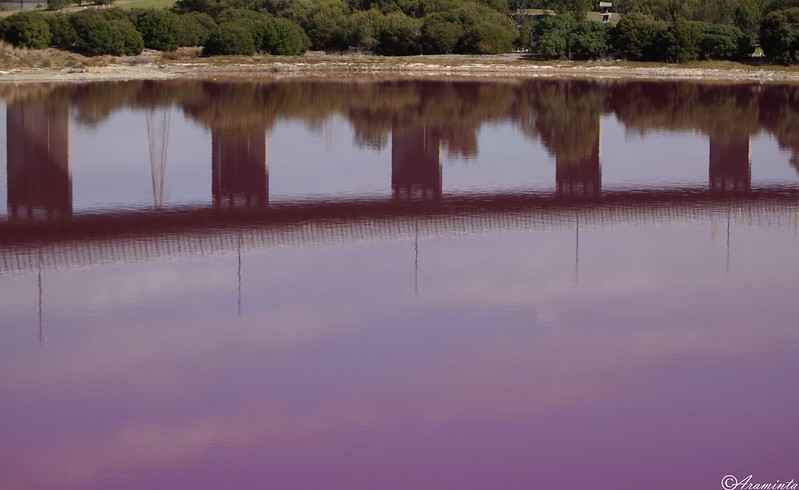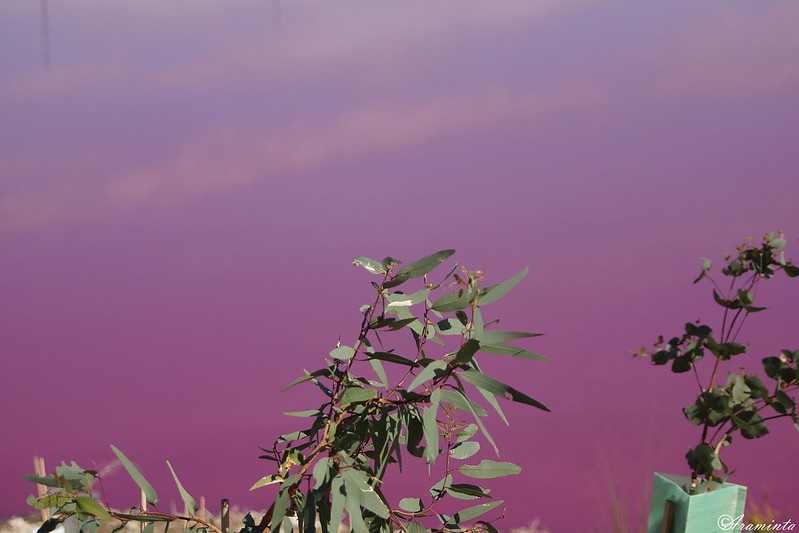If anyone gets a chance to go and visit the Westgate Park in Melbourne, it's a spectacular sight. The Salt Water Lake under the bridge is a bright red. Not poisonous to birds or animals.


| Term and Conditions | Privacy Statement | Web Support by Gaia Resources Hosted by Serversaurus |  |









3 pics and not 1 bird - are you feeling OK?
Peter
M-L
Is this the Azolla filiculoides aquatic plant?
I took this information from the "Friends of Westgate Park" website. Hope it helps?
As far as we know, our salt lake went pink in late 2012 because of the interaction of a harmless, single cell green alga – Dunaliella salina and an also harmless halobacterium – Halobacteria cutirubrum together with higher than usual salt levels, temperatures and light. (In extremely salty pink lakes (20%+) it is likely to be D. salina interacting with a halophile (salt-loving) archaea microorganism.) In these conditions, D.salina, growing in the salt crust at the bottom of the lake, produces the red pigment – beta carotene that absorbs and uses the energy of sunlight to create more energy that is needed to keep salt out of their cytoplasm. D.salina is one of the oldest salt-tolerant life forms on earth. Pink lakes are pretty rare although there are several in the Murray-Sunset National Park in Vic – Lakes Becking, Crosbie, Hardie and Kenyon, some in WA – Hutt Lagoon, Pink Lake and Hutt Lagoon and a handful in other countries. Pink lakes are major tourist attractions but they are also of great interest to the complementary medicine sector because D.salina is the richest natural source of carotene – an anti-oxidant. It also accumulates high concentrations of glycerol and pilot commercial plants are being set up in WA and elsewhere to exploit the resource. With cooler weather and good rain in autumn, the Saltwater Lake will likely resume its usual colour. Further reading: http://www.fao.org/docrep/field/003/AB728E/AB728E06.htm http://leahlefler.hubpages.com/hub/Pink-Lakes-Around-the-World http://en.wikipedia.org/wiki/Halophile http://www.interclinical.com.au/pdfs/algdl1.pdf Comments
M-L
Thanks for that, Araminta. Most interesting. I hope that those who plan to establish commercial plants for Dunaliella salina production in WA & other places don't extend their activities to the natural occurrences of this alga.